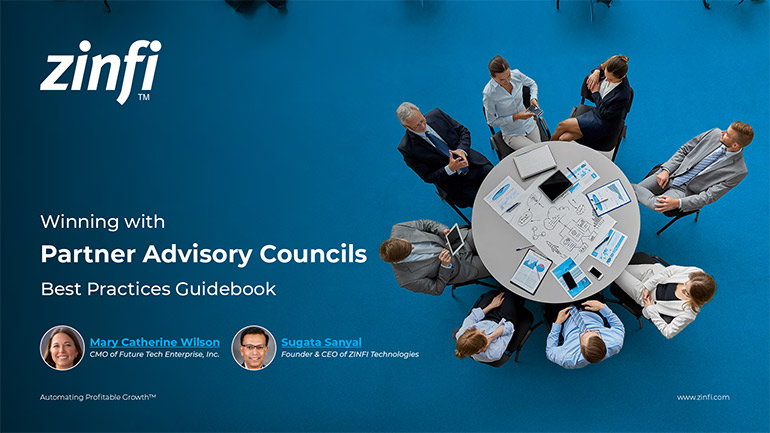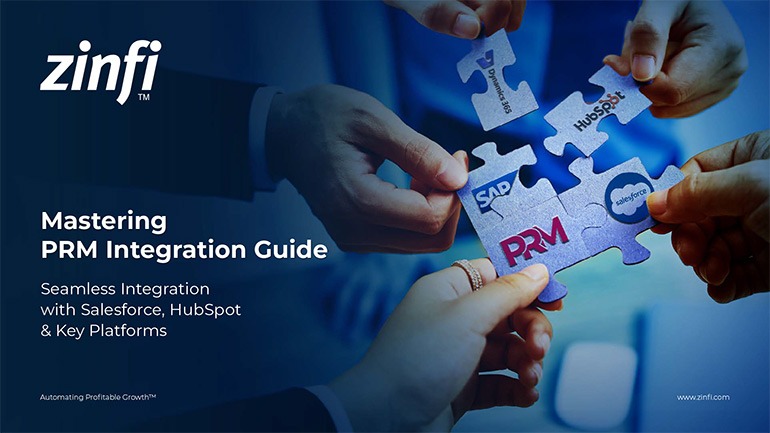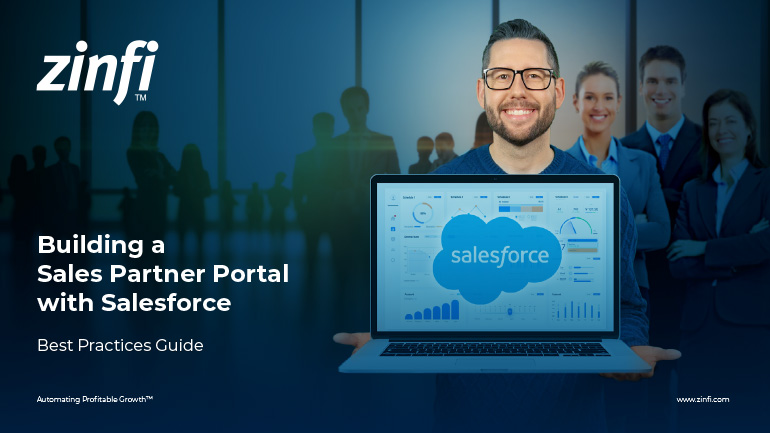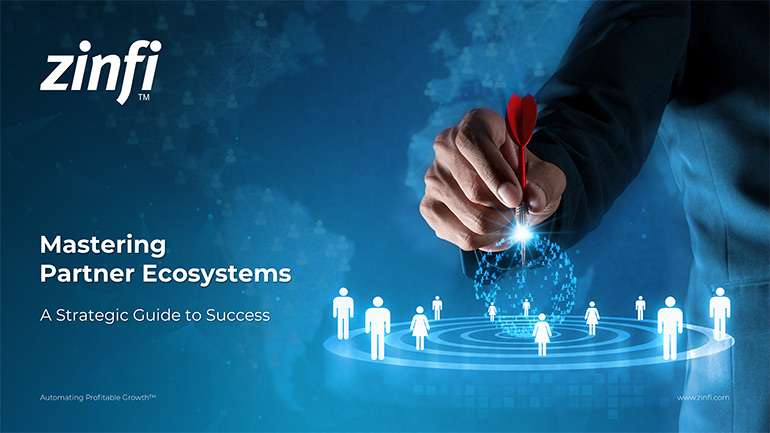Best Practices Articles

Partner Advisory Councils: A Strategic Growth Tool
Businesses succeed through partnerships. No company operates alone in today’s market. Organizations rely on partnerships to reach new customers, improve offerings, and increase revenue. However, managing these partnerships can be complex.
Each partner has unique goals, challenges, and priorities. Without a structured approach, businesses risk losing engagement and missing growth opportunities.
Partner Advisory Councils (PACs) solve this challenge. They provide a structured forum where businesses and partners collaborate. These councils go beyond basic discussions. They help companies gather feedback, refine strategies, and align with partner needs.
A well-managed PAC improves partner engagement, strengthens the partner ecosystem, and ensures long-term success.
PACs are essential for building trust. They create stronger relationships by fostering open communication. They allow vendors to understand partner expectations and address concerns effectively. Businesses that invest in PACs drive innovation, increase partner satisfaction, and gain a competitive edge.
Why Partner Advisory Councils Matter
Partnerships fuel growth. A strong partner ecosystem ensures business stability and expansion. However, many organizations struggle to maintain effective relationships with partners. Lack of communication often leads to disengagement.
Businesses that fail to engage partners risk losing valuable opportunities, reducing loyalty, and weakening their competitive position.
Partner Advisory Councils address these issues by fostering collaboration. They provide direct insights into partner concerns and expectations. Companies that listen and respond to partner feedback create stronger, more effective programs. A well-structured PAC brings several benefits.
Strengthening Partner Engagement
Partners need to feel valued. When companies listen to their input, they become more engaged. A Partner Advisory Council provides a structured platform where partners contribute ideas, share challenges, and influence decisions. When businesses act on this feedback, partners become more committed to the relationship.
Businesses that ignore partner concerns face declining participation. Many partners disengage when they feel unheard or undervalued. A PAC prevents this by ensuring open communication. A company that actively engages its partners builds long-term loyalty and stronger alliances.
Improving Partner Enablement
PACs help companies identify gaps in partner enablement. They highlight areas where training, marketing support, and sales tools need improvement. When businesses provide better resources, partners perform more effectively. A well-supported partner network leads to higher sales, stronger marketing execution, and improved service delivery.
Many businesses struggle with partner training. Some partners lack access to relevant resources. Others receive training that does not align with their needs. A PAC ensures companies provide targeted training that enhances partner skills.
Effective partner enablement results in better product knowledge, stronger sales, and improved market positioning.
Aligning Goals with Partner Needs
Companies must balance their business objectives with partner expectations. PACs provide direct insights into partner incentives, go-to-market strategies, and program effectiveness. When businesses align their offerings with partner needs, they build stronger relationships and increase engagement.
Successful partnerships require mutual benefits. Businesses that only focus on their goals risk alienating partners. A PAC ensures companies consider partner perspectives when making strategic decisions. This alignment leads to higher engagement and better collaboration.
Boosting Market Competitiveness
Collaboration with partners improves market positioning. A PAC enables businesses to stay ahead of industry trends. By gathering partner feedback, companies can anticipate market shifts and adjust strategies. Businesses that adapt quickly gain a competitive advantage.
PACs also help businesses identify new opportunities. Partners often have insights into emerging market trends. Companies that leverage this information stay ahead of competitors. PACs encourage innovation by fostering collaborative discussions on industry changes.
Building a Strong Partner Ecosystem
PACs create a sense of community. When partners feel like valued stakeholders, they invest more in the relationship. A strong partner ecosystem encourages loyalty, fosters innovation, and drives long-term success.
Businesses that cultivate a partner-centric culture gain lasting benefits. A PAC reinforces this culture by promoting transparency and collaboration. Companies that nurture their partner ecosystem see higher engagement, increased retention, and stronger partnerships.
Building an Effective Partner Advisory Council
A Partner Advisory Council must be well-structured to deliver results. Businesses need to focus on selecting the right partners, defining clear objectives, and ensuring productive meetings.
Selecting the Right Partners
A PAC must include a diverse group of partners. Strategic partners contribute high revenue and deep business engagement. Emerging partners bring fresh ideas and innovation. Industry-specific partners provide valuable niche market insights.
Technology and solution partners enhance product offerings. A balanced PAC ensures well-rounded discussions and better decision-making.
Many businesses make the mistake of including only large partners in PACs. However, smaller partners often provide valuable insights. Including a diverse mix of partners ensures broader perspectives and stronger decision-making.
Setting Clear Objectives
A PAC must have well-defined goals. Without a clear mission, discussions can become unproductive. Businesses should focus on improving partner incentives, strengthening training programs, and addressing operational challenges. A council with strong objectives drives meaningful results.
Clear objectives ensure every meeting delivers value. Businesses should communicate goals in advance. This preparation allows partners to contribute more effectively.
Structuring Effective Meetings
PAC meetings should be well-organized and focused. Businesses should schedule biannual in-person meetings along with virtual check-ins. A hybrid approach improves accessibility and ensures high participation.
Agendas should address key challenges, track previous commitments, and explore new growth opportunities. Without structure, PAC meetings lose effectiveness.
Successful PAC meetings encourage participation. Companies should create an open environment where partners feel comfortable sharing feedback. Businesses that foster honest discussions build trust and drive better results.
Common Challenges and Solutions
Despite their benefits, PACs can face obstacles. Companies must address these challenges to ensure long-term success.
Low Partner Engagement
Some partners hesitate to participate in PACs. They may doubt whether their feedback will lead to real change. Businesses must demonstrate the impact of the council by acting on feedback. Regular updates show partners how their input influences decisions.
Conflicting Priorities
Partners often have different business objectives. These may not always align with vendor goals. Companies should find common ground by focusing on shared benefits. Transparent communication builds trust and strengthens relationships.
Ineffective Communication
A PAC loses value if businesses fail to follow up on commitments. Assigning a dedicated PAC manager ensures accountability. Regular updates keep partners informed and engaged.
The Future of Partner Advisory Councils
Technology will continue to transform PACs. AI, automation, and data analytics will enhance decision-making. Businesses will use predictive analytics to anticipate partner needs. AI-driven personalization will improve partner enablement by delivering customized training and support.
Real-time performance tracking will optimize business strategies. Companies that embrace digital tools will strengthen their partner ecosystem and stay ahead of competitors.
Future PACs will become more data-driven. Businesses will use AI to analyze partner behavior and predict future trends. Automation will streamline meeting management and feedback collection. Companies that invest in digital transformation will create stronger, more effective Partner Advisory Councils.
Conclusion
Partner Advisory Councils play a crucial role in business success. They improve partner collaboration, increase engagement, and enhance enablement. A well-structured PAC fosters trust, strengthens alignment, and drives growth. Businesses that invest in PACs develop more resilient and profitable partnerships.
Companies that listen, adapt, and innovate will build high-performing partner ecosystems. They will gain a competitive edge and create long-term value through strong partner relationships.
Best Practices Guidebook
 Winning with Partner Advisory Councils: Best Practices for Partner Engagement & Growth
Winning with Partner Advisory Councils: Best Practices for Partner Engagement & GrowthDownload Guide
 The Future of Partner Ecosystems Best Practices
The Future of Partner Ecosystems Best PracticesDownload Guide
 The AI Revolution: How Technology and Talent are Shaping the Future
The AI Revolution: How Technology and Talent are Shaping the FutureDownload Guide
 Top 105 Partner Management Metrics that Matter Best Practices
Top 105 Partner Management Metrics that Matter Best PracticesDownload Guide
 Mastering PRM Integration Best Practices
Mastering PRM Integration Best PracticesDownload Guide
 Building a Sales Partner Portal with Salesforce Best Practices
Building a Sales Partner Portal with Salesforce Best PracticesDownload Guide
 Building and Managing Partner Ecosystems Best Practices
Building and Managing Partner Ecosystems Best PracticesDownload Guide
 Mastering Co-Marketing and Co-Selling Best Practices
Mastering Co-Marketing and Co-Selling Best PracticesDownload Guide
 Transforming Partner Ecosystems Best Practices
Transforming Partner Ecosystems Best PracticesDownload Guide
 Mastering Partner Ecosystems Best Practices
Mastering Partner Ecosystems Best PracticesDownload Guide
 Mastering Partner Onboarding Best Practices
Mastering Partner Onboarding Best PracticesDownload Guide
 Partner Ecosystem Management Best Practices
Partner Ecosystem Management Best PracticesDownload Guide
 B2B Marketing in the Age of Intelligence Best Practices
B2B Marketing in the Age of Intelligence Best PracticesDownload Guide
 Multi-Partner Co-Selling Best Practices
Multi-Partner Co-Selling Best PracticesDownload Guide
 A Guide to Enhance Channel Sales Efficiency
A Guide to Enhance Channel Sales EfficiencyDownload Guide
 Mastering Affiliate Marketing Best Practices
Mastering Affiliate Marketing Best PracticesDownload Guide
 The Ultimate Guide to Channel Partner Management
The Ultimate Guide to Channel Partner ManagementDownload Guide
 Top 10 Trends in 2024 Partner Relationship Management
Top 10 Trends in 2024 Partner Relationship ManagementDownload Guide







